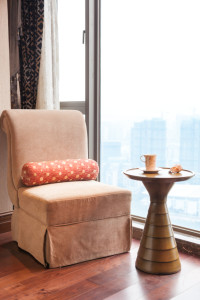Shrink Your Focus to Broaden Your Horizons
Posted by CoachCarrie on Mar 18, 2016 in Change, Enviromental Design, Leadership, Uncategorized | 0 comments
“Anyone who has tried to sleep with a mosquito in the room knows the impact of something small. But the positive impact of little things is even greater.” – Television Journalist, Deborah Norville
But why are details important?
Understanding the details of who you are and what you want enable you to make better decisions for yourself—decisions that will make you thrive.
Let’s do an exercise that will help you focus on details.
-
Close your eyes and visualize the picture-perfect chair by a window.
-
See the details and ask yourself:
-
What does the chair look like? What is the color and texture? Does it have a footrest or a high back?
-
What are you looking at outside the window?
-
Are you alone in the room, or is there someone there with you?
-
What are you feeling like sitting in that chair?
-
You would be surprised at how much can come from this simple exercise – looking at the big picture, then seeing the details as stepping stones to fill in that big picture. Whether you need help finding the right career path or seeing the kind of leader that gets results or you just want insight about your working style, a simple visualization tool like this can help you better understand what you value, what you want your legacy to be, what you enjoy, and what you want to do next.
When I work with a client, we explore the details that come from this exercise. Once these details come in to focus, the client’s goals begin to crystallize and become clear. Details help us form a vision that grows and morphs into something better than it was before. From this vision, we create a Personal Style Guide to lead them in developing plans to meet these goals.
We approach this plan together playfully and without pressure. As noted in Steven Keil’s inspiring TED talk, “A Manifesto for Play,” we are able to “develop better decision-making ability if we play more.” Keil also shows proof in this manifesto that “play promotes a sense of promise and self-fulfillment.” So while we are exploring some very meaningful ideas for the client, we are considering the entire person, and not just their skill set.
This is only the beginning. The Personal Style Guide is at all times flexible as people grow and evolve, always keeping mind that the “big picture” IS details.
Once we have the desired result before us, we can start to build the environment for it to advance and thrive, paving the way to who you want to become. This is the foundation for success—down to the last detail.




